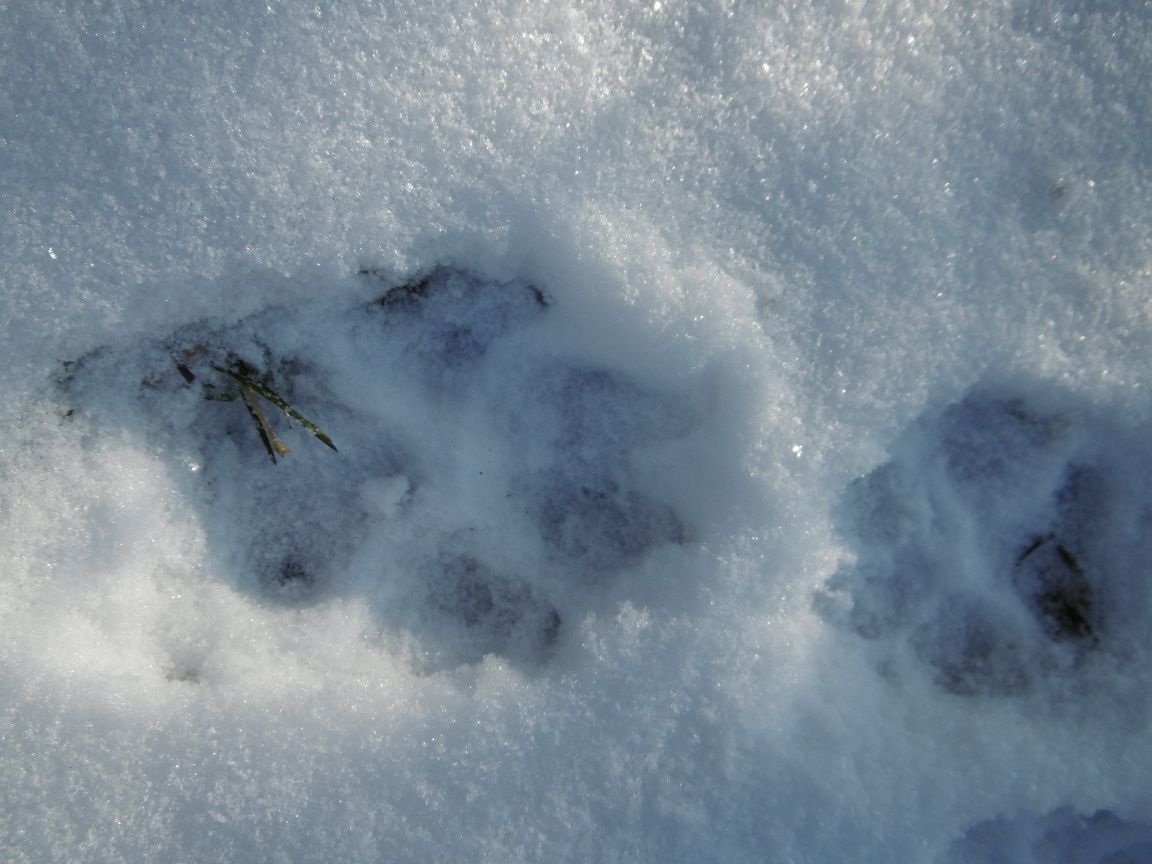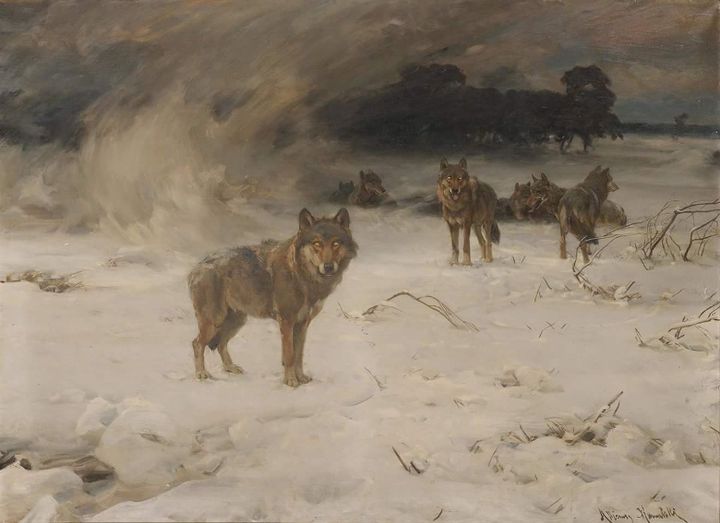In pratum
Winter is coming. In the Subcarpathian suburb it means a deer or a hare flitting suddenly on the horizon or just crossing your path on the run. It's a time of bird feeding and wild animal marks on the snow. Hopefully to hear a wolf's howl somewhere far away.

Majority of our last year seasons were dedicated to unleashed suburban dog-walks led through the Subcarpathian meadows and along the San river bank.
Meadows are 'suburbs of forests'. Bieszczady Mountains are characterised by the following elevation levels.
- Foothills [Polish pogórze, up to 500m] - formerly deciduous forests grubbed by humans for arable use (fields, pastures, orchards).
- Montana zone [Polish regiel dolny, 500m - 1150m] - riparian and mixed coniferous forests (mostly spruce), generally primeval.
- Polonynas [Polish połoniny, more than 1150m] - rock formations strewn around as a biotope for alpine or subalpine flora.
San Valley microregion is part of Natura 2000 project encompassing selected nature protection areas of the European Union, dominated by agriculture, meadows and shrubbery which a shallow river flows through.
As an ecosystem, (flood-)meadow is a natural environment of a river valley (and can be used as a natural 'fence'). An important part of a it is the flora, mainly grass and varied flowers. If it's regularly mowed or eaten by livestock or wildlife herbivores like deer or hare moving between forests (their natural habitat), the meadow remains without constantly growing trees or bushes so it doesn't change into more complex type of biocenose.
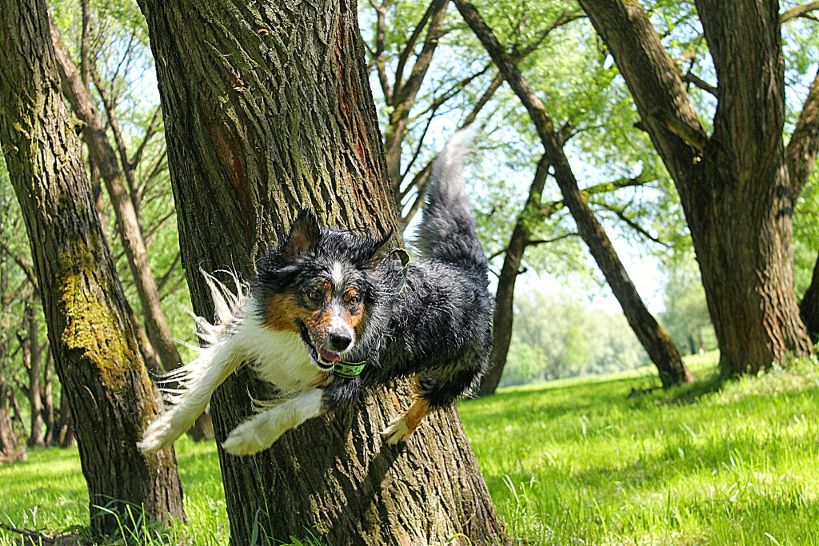
Every meadow wakes up in spring, Subcarpathian one isn't an exception. It starts from blue birdeye speedwells, white daisies and finally reaches dandelion season. Then yellow dandelion inflorescences change into white puffs of seeds forming parachutes which fly away with the wind.

In summer the meadow changes its image, its grass losses fresh green timbre to more discreet. Subcarpathian early summer is full of white and red clovers, and purple woodland geranium. Late in the summer yellow wild mustard, red poppy and centaureas appear, together with white fool's parsley and wild carrot. The wild carrot summaries the meadow season and preparations to sleep beginning in September. Its umbel curls up at the edges as its seeds ripen what makes Queen Anne’s Lace pretty photogenic.
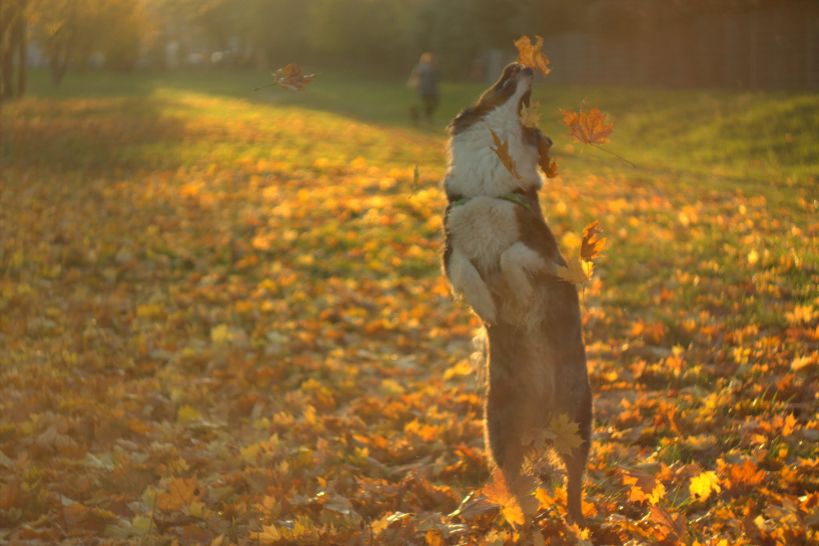
Meadow's flora prospers thanks to its soil (biotope), living there saprobionts (bacteria, fungus) and earthworms. Flowers are pollinated by bees, bumblebees, butterflies and the rest if pollinators moving pollen from male anther to female stigma of the same or another flower. Other more or less visible invertebrates are arthropodes - eusocial vespidae and ants (same as bees), ladybirds (beetles), flies and carnivore spiders, or snails (mollusks). All of them are diet or part of diet of vertebrates. In soil moles live, small mammal vertebrates representatives eating insects and their larvas. On the ground insects are hunted by frogs and toads (amphibians) or lizards (reptiles). Mice, as a small rodents, feed on seeds or the rest of insects if its necessary.
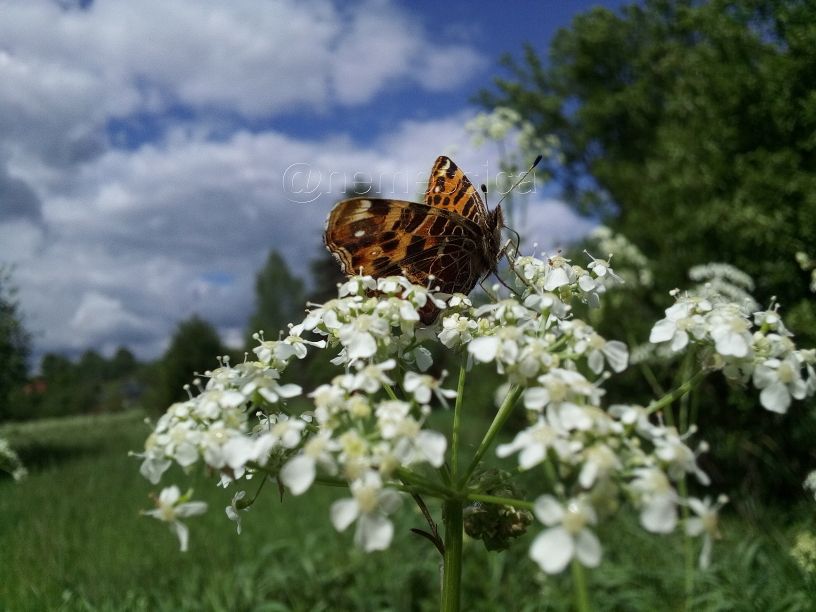
It's a bird habitat. The most noticeable seems to be a common pheasant - reach in colors (male), making unusual sounds if flushed out, that omnivore hunts same invertebrates as small vertebrates if it's possible. Seasonally, a stork hunts. Sometimes, majestic lesser spotted eagle soars through the sky or common cuckoo is audible. The shallow river bank is the empire of the waterfowl like partly herbivore swans and omnivore ducks (mallard). Carnivore herons regularly hunt fish. Next to them reintroduced beavers live with their strict diet, building constructions of trees and changing topography by their activity.
So, winter is coming. In the Subcarpathian suburb it means a deer or a hare flitting suddenly on the horizon or just crossing your path on the run. It's a time of bird feeding and wild animal marks on the snow. Hopefully to hear a wolf's howl somewhere far away.
